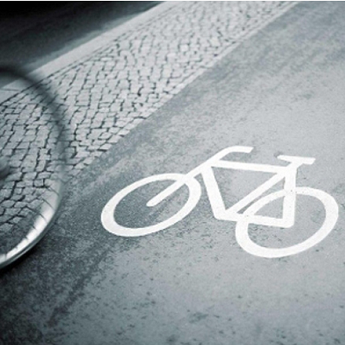Urban Development, Works and Equipment

DESCRIPTION
The Urban Development Strategy to Foster Economic Activity in the City of Madrid is rooted in the desire to revive productive uses of urban land to create jobs, transition to a new, digitalised, decarbonised economy and create a new territorial balance that gives old, underutilised industrial areas a renewed role in the new map of productive uses.
Although industrial land has been growing scarcer since the early 1990s, Madrid has held onto some of its industrial manufacturing fabric, primarily in certain parts of districts on its southeast edge where competition from other service-industry land uses hasn’t emerged as strongly as in areas in the centre and to the north of the city. Even so, dynamism hasn’t generally reached the desired levels in these industrial fabrics due to competition from other metropolitan sites and the decentralisation of business. The current potential for a revival of urban manufacturing could be an opportunity for these industrial areas, allowing vacant urban lots and relatively static areas to welcome new spaces for activity.
To this end, the Urban Development Strategy to Foster Economic Activity in the City of Madrid has set itself two main challenges: first, maintaining the city's present level of activity; and second, creating attractive spaces for the new economy, linking economic policy to urban development policy.
The proposals that underpin the strategy could potentially help foster economic activity and the creation of peripheral hubs that improve territorial balance and achieve better structuring of Madrid’s districts and neighbourhoods, with less dependence on its central areas and greater sustainability and resilience of the city as a whole and of its citizens.
The strategies envisioned are mainly aimed at creating hubs of activity in the districts of Villaverde, Vallecas and Vicálvaro; at comprehensive fostering of logistics; and at adjusting the role of some mixed fabrics and vacant lots in peripheral districts of Carabanchel, Tetuán, Fuencarral-El Pardo, Hortaleza, Moncloa-Aravaca and Barajas by putting publicly-owned land to use.
OBJECTIVES
The strategy’s general objectives are:
- Develop master documents for industrial areas and central urban spaces with the aim of identifying intervention strategies
- Foster hybridisation of industrial and other land uses and the creation of attractive spaces for the new economy
- Redefine productive land use and local services such as co-working spaces, spaces for e-learning, business incubators, health services, care services, sports, last-mile distribution centres and shared mobility centres
- Leverage municipally-owned land to foster urban innovation through land development competitions, seeking public-private partnership to create financially viable projects that contribute to modernising productive uses, urban regeneration and meeting environmental challenges
Actions are organised into three territory-based thematic categories:
- VIVAVI Strategy, focused on the industrial parks that drive economic activity in Villaverde, Vallecas and Vicálvaro, with the aim of maintaining current levels of economic activity, qualifying the urban structure and creating new attractive spaces that allow for new activities. With the aim of achieving these objectives, work is carried out involving:
- Defining new strategic criteria
- Modifying current plans
- Taking management actions to make implementation of current plans more dynamic
- Policy adjustments
- Urban development of the public space
- Fostering logistics in the A3 motorway corridor, leveraging the sharp, sustained increase in demand for transport, logistical and merchandise distribution services resulting from new habits and models of production, consumption and trade, in order to offer economic development options to areas without well-established economic activity and rationalise the use of land and the creation of traffic. This action line is focused on two very important operators in Madrid’s logistics sector: Mercamadrid and the Centro de Transportes de Madrid.
- Setting up new peripheral centres in the districts of Latina, Carabanchel, Tetuán, Fuencarral-El Pardo, Hortaleza, Barajas and Moncloa-Aravaca will allow progress to be made in putting together a more polycentric urban structure through qualification of the urban fabric. These urban hubs are intended to attract new activities and services for citizens that can create jobs and reinvigorate the productive fabric based on decarbonisation, green infrastructure and technological modernisation, with new models of business and social innovation.
DURATION
The strategy is long-term and entails multiple initiatives of varying chronological priority depending on compatibility with strategic objectives, the level of impact expected, the degree of agreement among the various agents involved and the availability of resources.
THE PROJECT IN NUMBERS
Various sources of financing are envisioned to fund a project of this scope. The Recovery and Resilience Facility and ReactEU funds are being used for preliminary preparation, procedures and formalities, as well as to conduct studies and projects and implement programmes to provide technical support and training to the entities and organisations involved, in addition to undertaking supervision and monitoring.
Basic infrastructure such as urban development works, mobility and accessibility infrastructure, landscaping, etc. are generally financed with a combination of NGEU funds and budgetary allocations by Madrid City Council. Facilities whose management is deemed necessary by the public sector will be financed with a combination of public funds, institutional European funds and special funds.
Public-private partnership is also sought via land-development competitions to attract innovative uses that help revive the urban dynamic. Two editions of Reinventing Cites, the EUROPAN 15 contest and the PLAZER contest have been held for this purpose. Consideration is currently being given to holding a third edition that could put plots of municipally-owned land to use.
ADDITIONAL INFORMATION





